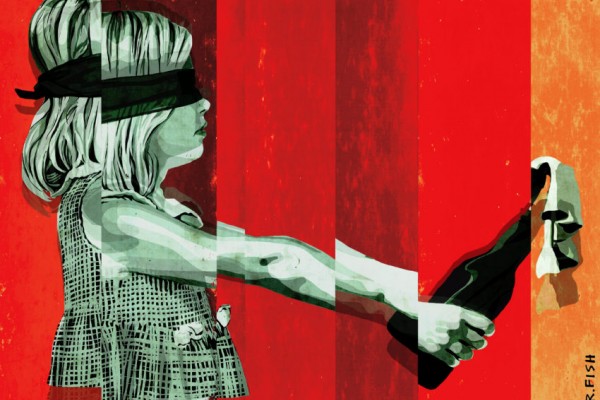Republican and Democrat: the choice between two right-wing parties
Both candidates in this year’s presidential election represent the two competing factions within the American capitalist class

Signs for former Vice President Joe Biden at a meet and greet with Kerry Washington and Nnamdi Asomugha at Eastlake Park in Phoenix, Arizona. Photo by Gage Skidmore/Flickr.
The storm of protests that has rattled the United States since the murder of George Floyd on May 25 took the form of a vast popular revolt against systemic racism, police brutality, poverty and the decline of American democracy. During this six-week period according to the New York Times, between 15 million and 26 million people were in the streets. The participation in these demonstrations was very diverse: African Americans, young white people, Latinxs, Asians, the LGBTQ+ community and in certain western states, native peoples.
For many observers, such as the Marxist sociologist John Bellamy Foster, this was one of the most important revolts in US history. Bellamy Foster has written:
So far, the loser, as far as the political process goes, appears to be Trump, whose popularity has fallen in the last few months… The combination of a disastrous handling of the COVID-19 pandemic, an economic depression, and an unprecedented revolt against racial capitalism in the country, led by Black Lives Matter, has finally punctured the white supremacist electoral strategy of the Trump administration.
In this tumultuous context, the United States is holding a presidential election, which represents yet another “lesser evil” choice for progressives and the American people in general. On the one hand, the American people are facing a right-wing authoritarian who, sends in the troops against peaceful protesters (think Portland), separates immigrant families in brutal conditions and is sliding rapidly towards neofascism, of the kind Bertram Gross warned against 40 years ago in his book Friendly Fascism, which contemplated the dangers of the integration of big business and big government.
On the other hand, Democratic Party candidate Joe Biden, a so called “tough on crime” moderate who, at the opposite end of the spectrum from Democrats like Bernie Sanders and Alexandria Ocasio-Cortez, has repudiated the idea of national universal healthcare, police reform, and pushed aside the Green New Deal as a solution to climate change and the environmental crisis. As a Democratic senator for the state of Delaware, he stood up frequently on the floor of the Senate to support the war in Iraq and on numerous occasions has called George W. Bush his friend.
This is the choice offered by the two elitist and traditional parties. The prospective losers in this 2020 presidential election are neither Trump nor Biden, but the American people and American democracy which are both in peril. With a return to a Trump presidency, anything is possible, especially with the six conservatives on the Supreme Court.
But what of a Biden presidency? Under the Obama administration, Vice president Biden was the leading spokesperson for the implementation of neoliberal austerity policies. He was the leading spokesperson for Obamacare, which offered 45 million new clients to private insurance companies with guarantees by the Obama-Biden administration that the government would back the payment of policies, with low interest rates. Biden also wanted Obamacare passed in order to cut Medicare (universal health care for those over 65 years of age), arguing that with Obamacare it was no longer necessary.
The democrats are no longer a centrist party relying on their traditional base, the American working class. While he has always paid lip service to the working class, Biden has participated in a fundamental shift of the Democratic Party towards the upper middle class elites—educated, urban, cultured and moderate conservatives And the party’s strategy in the current campaign, with Biden at the helm, is to woo moderate conservative Republicans uneasy with Trump’s extreme right-wing populist politics to jump ship.
What we are really faced with in this 2020 US presidential election are two candidates who represent the two competing factions within the American capitalist class. This intraclass struggle is based on two visions on how to rebuild American hegemony for the 21st century. Trump represents a return to an authoritarian free market savage capitalism. The faction that supports him needs to solidify and increase their profits, and is content to do so by controlling world trade by means of Trump’s America First policy and of course by confronting and weakening China, seen as the contending hegemon. The policy is no free trade unless it favours the US (as the strategy in the NAFTA negotiations with Canada clearly demonstrated). In addition, Trump represents a new approach to foreign policy based on a new network of allies for domination and any eventual war (a case in point is the treaty between Israel, the United States, the United Arab Emirates, Bahrain, and now Sudan, designed to isolate Iran in the Middle East). This is the meaning of Trump’s conception of making America great again.
The competing faction of capital that supports Biden wants the Unites States to remain the world’s sole superpower but based on more open free trade deals with an economic network of close allies. In other words, this faction still believes in some redefined form of globalization. Of course, the end goal is still to make more money on their investments with a cut of the profits for the political class that supports them.
The question progressives in Canada and Québec must ask is how our working class and labour unions will face these two representatives of the capitalist class of the United States.
The unions in this country must create a platform of solidarity with progressive unions in the US. The emerging struggles led by progressive American unions and exemplified by the teachers’ strike across the United States represent an opportunity for Canadian and Québec unions to forge a unified strategy of resistance to the American capitalist class. Similarly, the left in Canada and Québec has to solidify relations with the American socialist left. One place to start is with cross border conferences—virtual ones until the COVID crisis subsides—which are useful for consolidating common strategies.
Canadian progressives must loudly oppose the efforts of representatives of the American capitalist class (of whatever political stripe) to subjugate Canadian interests to those of the United States. This does not mean adopting a nationalist position, but rather developing a solid and enduring cross-border strategy against our common enemy, capitalism, and those who serve it, whether Canadian or American. Whoever wins the upcoming election, this should be the task for the socialist left in Canada and Québec.
Donald Cuccioletta is a professor in the History department at L’Université du Québec à Montréal.










